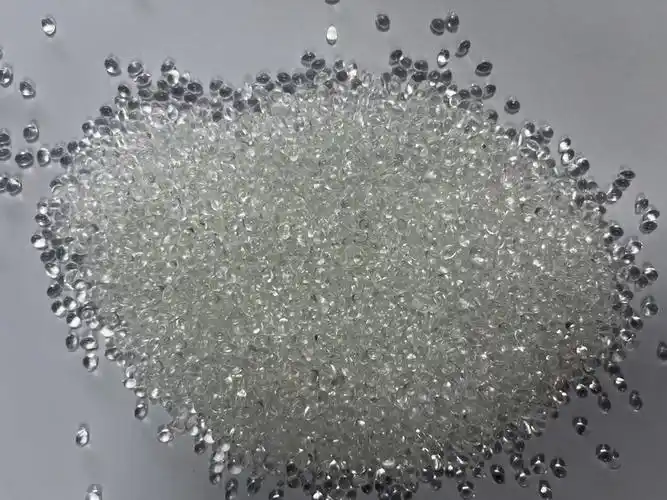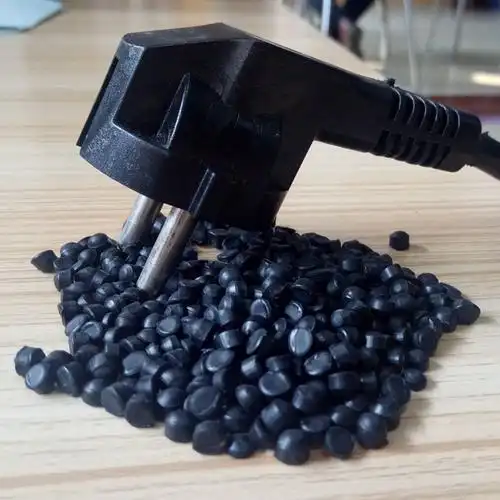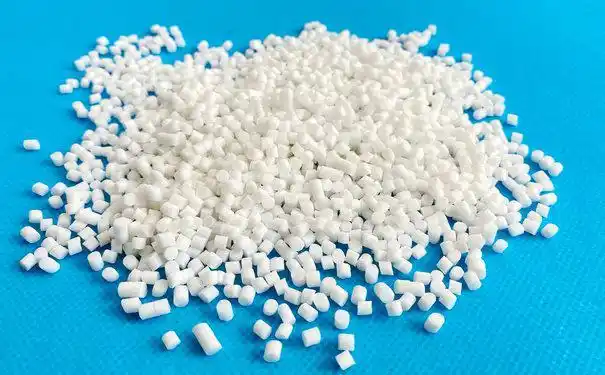As someone who has been navigating the materials industry for years, I understand how critical it is to choose the right TPE (Thermoplastic Elastomer) for both product development and cost control. TPE, known for its excellent elasticity and processability, is widely used in automotive, medical, and consumer goods sectors. However, the price of TPE varies significantly depending on its hardness, often leaving buyers and engineers puzzled. Today, I’ll share my insights and market research to break down the price ranges of TPE materials with different hardness levels, helping you make informed decisions without unnecessary detours.

What is TPE? How Much Does Hardness Affect Price?
TPE is a polymer material that combines the elasticity of rubber with the processability of plastic. Its hardness is typically measured using the Shore scale (Shore A or Shore D), ranging from ultra-soft 0A to harder 70D. Different hardness levels lead to variations in formulation, performance, and application, which directly influence pricing.
In my experience working on various projects, clients often ask, “Why does the price of TPE vary so much?” The answer lies in the fact that TPE pricing is not solely determined by hardness but also by raw material formulation, production processes, market supply and demand, and brand reputation. Softer TPEs (e.g., 0A-30A) often require more plasticizers or specialized formulations, making production more complex and costly, while harder TPEs (e.g., 50D and above) are generally cheaper due to simpler formulations.
Key Factors Influencing TPE Prices
Before diving into specific price ranges, let’s explore the key factors that affect TPE pricing. This will help you better understand the logic behind the price variations.
Hardness Level: As mentioned, hardness significantly impacts TPE’s formulation and production costs. Ultra-soft TPEs (0A-30A) require more plasticizers or additives, increasing costs. Medium-hardness TPEs (30A-60A) are widely used, leading to competitive pricing, while high-hardness TPEs (50D and above) are less expensive due to simpler formulations.
Raw Material Sources: TPE is composed of base resins (e.g., SEBS, SBS), plasticizers, and additives. Fluctuations in global crude oil prices directly affect the cost of base resins and plasticizers, while specialized additives (e.g., flame retardants or UV stabilizers) further drive up costs.
Production Process: TPE production involves formulation design, compounding, and extrusion. Specialized TPEs (e.g., food-grade or medical-grade) require stricter production environments and certifications, leading to higher costs.
Brand and Supplier: International brands like Kraton and Teknor Apex typically charge higher prices due to consistent quality and robust technical support. Domestic suppliers, on the other hand, offer more competitive pricing for general-purpose TPEs, though quality can vary.
Order Volume and Customization: Bulk purchases often secure lower unit prices, while small batches or customized formulations (e.g., specific colors or flame-retardant properties) can significantly increase costs.

Price Ranges of TPE by Hardness
To give you a clear picture of TPE pricing, I’ve compiled a table based on 2025 market trends, drawing from my discussions with suppliers, industry reports, and recent market data. This table covers the price ranges for general-purpose, food-grade, and medical-grade TPEs.
| Hardness Range (Shore A/D) | General-Purpose TPE (CNY/kg) | Food-Grade TPE (CNY/kg) | Medical-Grade TPE (CNY/kg) |
|---|---|---|---|
| 0A-30A (Ultra-Soft) | 25-40 | 40-60 | 80-120 |
| 30A-60A (Medium-Soft) | 20-35 | 35-50 | 60-100 |
| 60A-85A (Medium-Hard) | 18-30 | 30-45 | 50-80 |
| 40D-70D (High-Hardness) | 15-25 | 25-40 | 45-70 |
Notes:
Prices are ex-factory (excluding taxes and shipping) and may vary based on suppliers, order volume, and market fluctuations.
Food-grade TPEs must comply with FDA or EU food contact standards, increasing production costs.
Medical-grade TPEs require ISO 10993 biocompatibility certifications, making them the most expensive.
As the table shows, ultra-soft TPEs (0A-30A) are generally pricier, especially for medical-grade applications, where prices can exceed 100 CNY/kg due to the need for costly plasticizers and low-volatile formulations. Medium-hardness TPEs (60A-85A), widely used in products like phone cases and seals, benefit from competitive pricing due to high market demand.
Applications and Price Considerations by Hardness
In practice, hardness not only affects pricing but also determines the suitability of TPE for specific applications. Below, I’ve outlined common hardness ranges, their applications, and tips for cost-effective selection.

1. Ultra-Soft TPE (0A-30A)
Applications: Medical catheters, baby products (e.g., pacifiers), soft-touch products.
Characteristics: Extremely soft and elastic but challenging to process, requiring high-precision equipment.
Price Considerations: These TPEs are expensive, particularly for medical applications. I recommend prioritizing ISO-certified brands for safety and compliance. For budget-conscious projects, consider domestic food-grade TPEs but ensure thorough testing for volatile content.
2. Medium-Soft TPE (30A-60A)
Applications: Sports equipment grips, soft toys, sealing strips.
Characteristics: Balances softness and strength with excellent processability and abundant market supply.
Price Considerations: This is the most common hardness range with stable pricing. Evaluate whether additional features like UV resistance or flame retardancy are necessary to avoid unnecessary costs.
3. Medium-Hard TPE (60A-85A)
Applications: Phone cases, automotive interiors, tool handles.
Characteristics: Moderate hardness with good wear and tear resistance, suitable for injection molding and extrusion.
Price Considerations: Affordable and ideal for large-scale production. Compare multiple suppliers and focus on batch-to-batch consistency.
4. High-Hardness TPE (40D-70D)
Applications: Industrial components, rigid casings, pipe fittings.
Characteristics: Close to plastic in hardness with high strength but reduced elasticity.
Price Considerations: The most cost-effective option, suitable for applications with low elasticity requirements. Ensure the TPE’s toughness meets durability needs.
How to Choose the Right TPE Within Budget
From my experience, many buyers fall into two traps: chasing the lowest price, which compromises quality, or over-relying on premium imported brands while overlooking cost-effective domestic options. Here are my practical tips for selecting TPE wisely:
Define Product Requirements: Before sourcing, clarify the required hardness, performance, and certifications. For example, medical products demand medical-grade TPE, while general consumer goods can use cost-effective general-purpose TPE.
Request Multiple Quotes: TPE prices fluctuate, so I recommend reaching out to 3-5 suppliers for quotes and samples to compare performance and cost. This approach has saved me headaches in many projects.
Consider Long-Term Costs: Cheap TPEs may lead to higher production reject rates due to inconsistent quality. Factor in both material costs and manufacturing efficiency.
Communicate Customization Needs: For specific requirements like colors or flame-retardant properties, discuss with suppliers early. Customized formulations may cost more but can prevent processing issues later.
Monitor Market Trends: TPE prices are sensitive to crude oil prices and supply-demand dynamics. In early 2025, rising oil prices may push TPE prices up by 5%-10%, so consider locking in bulk contracts early.

Real-World Case Study: Optimizing Costs Through Hardness Selection
A few years ago, I worked on a sports equipment project where the client needed a TPE for grips, requiring a soft feel and good durability on a tight budget. Initially, they leaned toward a 30A ultra-soft TPE priced at 40 CNY/kg, which exceeded their budget. After testing, I suggested a 45A TPE at 25 CNY/kg. By tweaking the mold design and surface treatment, we achieved a comparable feel and durability, ultimately saving 30% on material costs.
This experience taught me that hardness selection is not just a technical decision but a balance of performance and cost. Through thorough supplier discussions and sample testing, you can find the right TPE within budget.
Future Trends in TPE Pricing
Looking at 2025, global economic and raw material market uncertainties will continue to impact TPE prices. Based on my recent conversations with industry peers, here are some trends to watch:
Raw Material Costs: Rising crude oil prices will likely increase the cost of base resins and plasticizers, potentially pushing TPE prices up by 5%-10%.
Environmental Regulations: Growing demand for eco-friendly materials like bio-based or recyclable TPEs may raise prices by 20%-30% compared to traditional TPEs.
Regional Differences: Domestic Chinese suppliers are closing the quality gap with international brands while maintaining a price advantage, likely increasing their market share in the coming years.
I recommend staying informed about industry trends and partnering with suppliers who invest in R&D to ensure both quality and price stability.
Conclusion: Smart Selection for Performance and Cost
Drawing from years of industry experience, I’ve learned that while TPE pricing can seem complex, clear requirements and informed comparisons make it manageable. TPE prices range from 15 CNY/kg to 120 CNY/kg depending on hardness, application, and certifications. By aligning your choice with specific needs and budget, you can avoid common pitfalls and find the best material.
If you’re struggling with TPE selection, start with your hardness requirements, refer to my table, and engage with suppliers for tailored solutions. I hope my insights help you navigate the TPE market with confidence!

Related Q&A
Q1: How is TPE hardness tested? Does it affect pricing?
A: TPE hardness is measured using a Shore durometer (Shore A for soft grades, Shore D for harder ones). Testing is straightforward but requires calibrated equipment. Hardness directly impacts formulation and production costs, with ultra-soft or specialized hardness grades being pricier.
Q2: Is there a big difference between domestic and imported TPEs?
A: Imported TPEs (e.g., Kraton, Teknor Apex) offer superior formulation consistency and technical support, ideal for high-end applications. Domestic TPEs are more affordable, with general-purpose grades nearing import quality, but batch consistency may vary. Choose based on project needs.
Q3: How can I verify if TPE meets food-grade or medical-grade standards?
A: Food-grade TPEs must comply with FDA or EU 10/2011 standards, while medical-grade TPEs require ISO 10993 biocompatibility certification. Request certification documents from suppliers and conduct third-party testing to ensure compliance.
Q4: Does TPE price vary with color?
A: Yes, customized colors (e.g., transparent or specific shades) require color masterbatches or formulation adjustments, increasing prices by 10%-20%. Confirm color tolerance and cost impacts with suppliers.
Q5: Are TPE prices much higher for small batches?
A: Small-batch purchases typically cost 20%-30% more per unit due to production and logistics cost allocation. Negotiate minimum order quantities with suppliers or opt for stock general-purpose grades to save costs.





